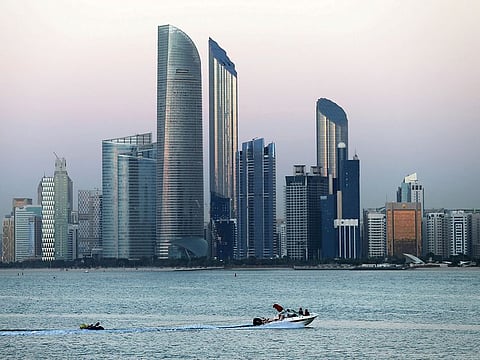UAE Central Bank expects economy to rebound from second half of 2020
Stimulus measures seen to weigh positively on key economic indicators

Dubai: The UAE economy is expected to begin recovery in the second half of 2020 following the sharp downturn experienced in the months of March, April and May as a result of the COVID-19 pandemic according to the Central Bank of UAE (CBUAE).
“While recovery of economic activity is projected to commence in the second half of the year, improvement in economic sentiment will hinge on deploying policy support measures,” the CBUAE said in its quarterly economic review.
Positive impact of stimulus
The CBUAE expects the Targeted Economic Support Scheme (TESS) and the economic stimulus packages announced by both local and federal governments are likely to weigh in positively on the PMI, real estate prices, employment and credit growth with a positive impact on the overall sentiment once the virus risks are under control.
The CBUAE launched TESS in two phases, commencing on 14th of March. The objectives of the TESS support measures are to (i) facilitate the provision of temporary relief by banks to all affected private sector corporates, SMEs and individuals, and (ii) facilitate additional lending capacity by banks, through the relief of existing capital and liquidity buffers.
The total amounts of the measures added up to Dh256 billion, consisting of Dh50 billion capital buffer relief, Dh50 billion zero cost funding support facility to banks in exchange for targeted relief to their retail and corporate customers affected by COVID-19 pandemic, Dh95 billion liquidity buffer relief, and reduction by half the reserve requirements on demand deposits for all banks from 14 per cent to 7 per cent, adding Dh61 billion liquidity support.
Slow growth
The CBUAE said that following the sudden and sharp contraction for most of the UAE non-energy sectors in March, due to the COVID-19, the pace of economic growth declined in the first quarter of 2020 after a robust performance in the second half of 2019.
Real growth in the UAE is estimated at -1.0 per cent year on year in Q1 2020 by the CBUAE. Hydrocarbon GDP increased by an estimated 3.7 per cent in the first quarter of the year. The non-hydrocarbon GDP growth is estimated to have declined by -3.0 per cent in Q1 2020, compared to 4.4 per cent growth in the previous quarter. The drop in economic activity is expected to be followed by sharp contractions in the subsequent quarters, non-energy growth contraction is projected at -4.1 per cent for 2020.
CBUAE expects oil prices to remain weak throughout the year given the severe fall in global demand, which is not expected to return to its normal levels this year, coupled with the oversupply
Inflation and jobs
CPI inflation remained negative for the third quarter recording –1.4 per cent. Private sector employment, measured by the number of work permit holders, remained robust for a fourth consecutive quarter, registering a year on year growth of 2 per cent in Q1 2020. However the numbers masked severe underemployment among permit holders in the sectors affected by the COVID-19 pandemic.
Real estate prices continued to decline by -8.3 per cent and -3.5 per cent year on year in Abu Dhabi and Dubai, respectively.
Banking sector
Banking sector indicators showed healthy loans and deposits growth in Q1 2020. Deposits increased on a yearly basis by 5.9 per cent, led by the increase in GREs and private sector deposits. Credit continued its growth during the first quarter, where it registered a 5.6 per cent annual growth, underpinned by healthy Financial Soundness Indicators that signify a sound and stable banking system. The prompt policy actions through the TESS extended by the CBUAE to the banking sector and continued growth in non-government resident deposits helped support the resilience of the banking system. The CBUAE balance sheet expanded, supporting continued growth in the money supply in Q1 2020.
Sign up for the Daily Briefing
Get the latest news and updates straight to your inbox







